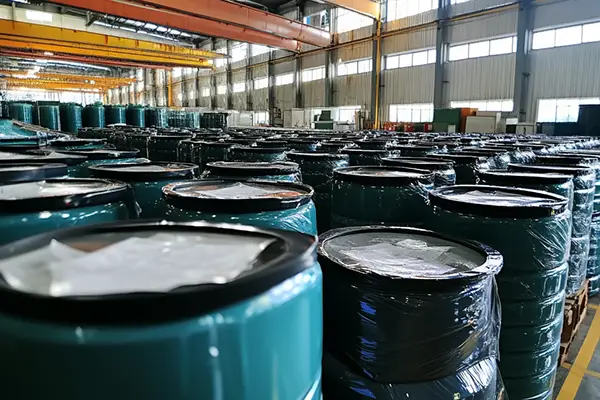
PU rubber, known for its durability and versatility, is a popular material in various industries. But how long does it really last? Understanding the lifespan of PU rubber can help you make better decisions when choosing products for your business.
The lifespan of PU rubber generally ranges from 2 to 5 years, depending on the conditions it’s exposed to, like temperature, UV exposure, and wear.
To understand how to get the most out of PU rubber, it’s essential to compare it with other materials and explore specific use cases.
Which is better: PU or rubber?
PU and rubber are both common materials, but which one stands out in terms of performance and longevity?
PU offers better durability, resistance to abrasion, and flexibility compared to traditional rubber, making it ideal for various applications.
 https://bullsafety.com/pu-cut-resistant-gloves/
https://bullsafety.com/pu-cut-resistant-gloves/
Durability
PU rubber is more resistant to wear and tear than natural rubber, making it a top choice for industries requiring long-lasting materials.
Flexibility
PU rubber maintains flexibility even at low temperatures, while traditional rubber can become brittle.
Cost-Effectiveness
Despite being more durable, PU rubber is often more affordable than rubber, making it a preferred choice for manufacturers.
Comparison Table: PU vs Rubber
| Feature | PU Rubber | Natural Rubber |
|---|---|---|
| Durability | More resistant to abrasion | Less durable over time |
| Flexibility | Maintains flexibility in cold | Becomes brittle in cold conditions |
| Cost | More affordable | Can be more expensive |
| Abrasion Resistance | High | Moderate |
| Temperature Resistance | Good in low temperatures | Vulnerable to high/low extremes |
What should you not use PU gloves for?
While PU gloves are widely used, there are certain conditions where they might not be the best choice.
PU gloves should not be used in environments with high heat, excessive moisture, or chemical exposure, as they could deteriorate quickly.
Heat Resistance
PU gloves are not ideal for handling high-heat objects or working in hot environments, as the material could melt or weaken.
Chemical Exposure
PU gloves do not offer the same chemical resistance as nitrile or latex gloves, so they should be avoided in chemical handling situations.
High Moisture
Excessive moisture can cause PU gloves to lose their grip and effectiveness, making them unsuitable for wet environments.
Key Factors to Avoid PU Gloves:
| Factor | Reason to Avoid PU Gloves |
|---|---|
| High Heat | PU can melt or lose flexibility |
| Chemical Exposure | PU lacks the chemical resistance of nitrile or latex |
| Excessive Moisture | PU gloves can lose their grip and become slippery |
| Heavy-duty Tasks | PU gloves are less durable for heavy industrial tasks |
Is polyurethane the same as nitrile?
Both polyurethane (PU) and nitrile are popular choices for gloves, but are they the same material?
No, PU and nitrile are different materials. Nitrile is more chemical-resistant, while PU offers better flexibility and abrasion resistance.
Chemical Resistance
Nitrile gloves are preferred in environments that involve handling oils, solvents, or chemicals.
Flexibility and Comfort
PU gloves are lighter and more flexible, providing better comfort in tasks that require dexterity.
Durability
While both materials are durable, PU excels in abrasion resistance, while nitrile is stronger against punctures and chemical damage.
Comparison Table: PU vs Nitrile Gloves
| Feature | PU Gloves | Nitrile Gloves |
|---|---|---|
| Chemical Resistance | Moderate | High |
| Flexibility | Very flexible | Flexible, but less than PU |
| Abrasion Resistance | High | Moderate |
| Comfort | Lightweight and breathable | Comfortable but thicker |
| Puncture Resistance | Low | High |
Does OSHA recommend PU gloves?
OSHA has specific standards for personal protective equipment1 (PPE), but do they recommend PU gloves?
Yes, OSHA recognizes PU gloves for certain tasks, but they must meet specific standards for safety and protection in the workplace.
Safety Standards
OSHA mandates that PPE like gloves must meet performance requirements, such as cut resistance and grip. PU gloves can meet these if they’re CE or ANSI certified.
Task Suitability
PU gloves are suitable for light-duty tasks, but they may not meet OSHA standards for high-risk activities, such as handling hazardous materials.
Certification
Ensure that PU gloves are certified to meet industry-specific standards, such as EN3882 for abrasion resistance or ANSI3 for safety ratings.
OSHA Requirements for PPE Gloves
| Criteria | PU Gloves | Other Gloves (e.g., Nitrile, Latex) |
|---|---|---|
| Cut Resistance | Can meet standard with certification | Higher standard in many cases |
| Grip | Suitable for light-duty tasks | Varies depending on glove type |
| Certification | Must meet ANSI/CE standards | Must meet ANSI/CE/OSHA standards |
| Chemical Resistance | Low resistance | High for nitrile, moderate for latex |
Conclusion
In summary, PU rubber offers a great balance of durability, flexibility, and cost-effectiveness, but it’s essential to understand its limitations and best applications.



